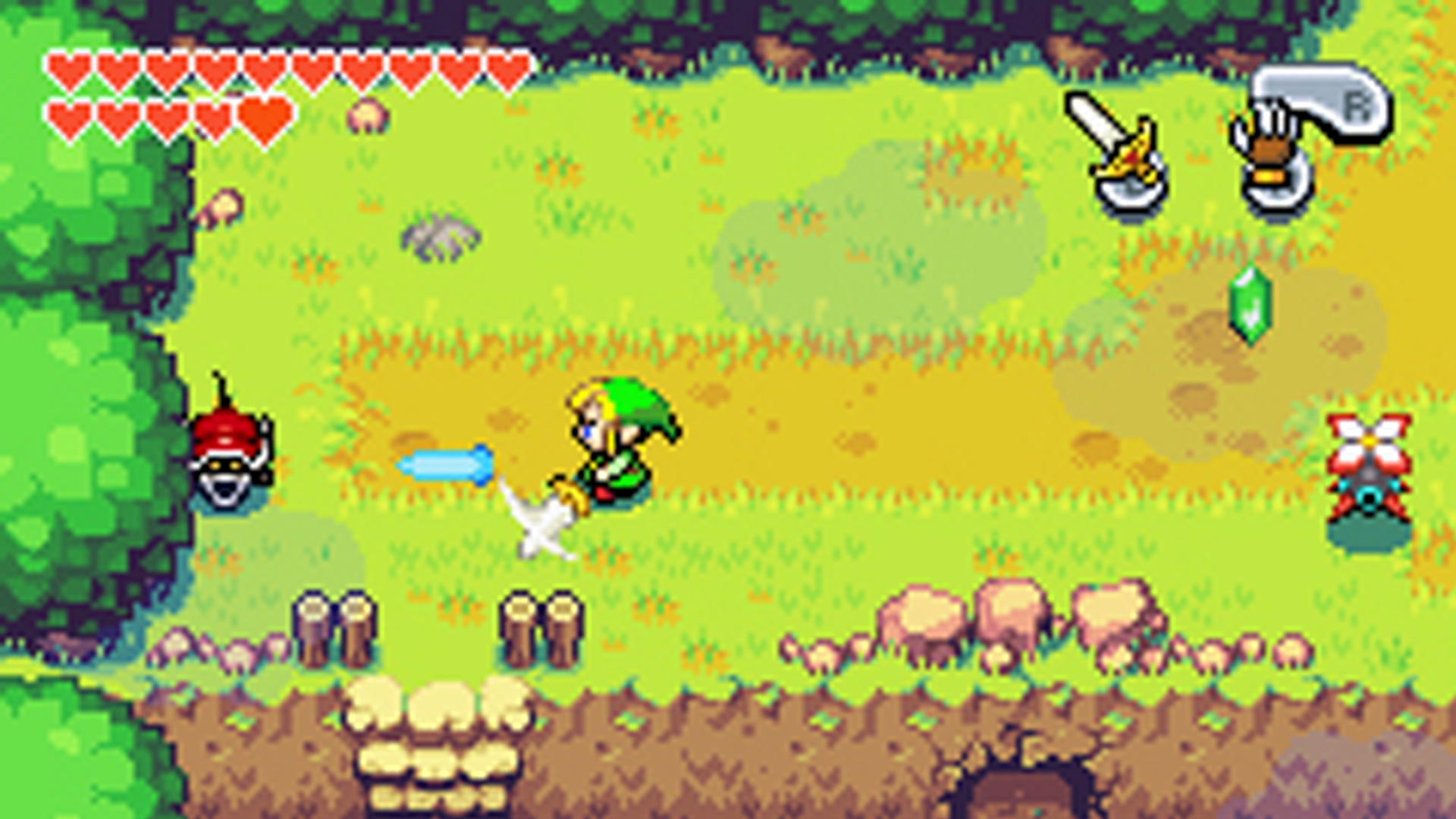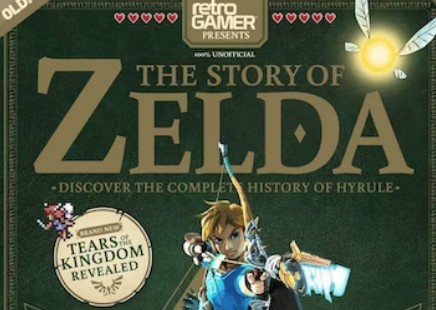The Legend of Zelda: The Minish Cap was smaller in scale but massive in heart and ambition
Hats off to the the 12th Zelda series entry that's full of heart

Following the dual success of Oracle Of Ages and Oracle Of Seasons for the Game Boy Color, Capcom and its now‑defunct subsidiary Flagship began work on a fresh Zelda concept for the newly released Game Boy Advance. Hidemaro Fujibayashi would return as director of the project, while 3D Zelda savant Eiji Aonuma was brought in to supervise the development and ensure the game felt like it belonged in the Zelda series.
The first step was deciding upon a unique theme to build the world around, much like how the Oracle games used the passage of time and the changing seasons to harness the limited space available on game cartridges to create expansive and dynamic settings. The idea of having Link change in size was put forward as the core concept of the game, allowing the same locations to be explored in new ways and gameplay to be built around seeing the world from a tiny perspective. Zelda titles have always played with symmetries – light and dark, past and future, adult and child – and size was another way to bring two contrasting worlds together.
Size matters


While Nintendo usually started development by creating potential game assets, Capcom approached things differently. Designers poured their passion for the project into vibrant and whimsical concept art – some showing a new race of tiny, fairy-like creatures. These were reminiscent of the brownies, sprites and pixies found in fables across the world, but also took much influence from the korpokkur of Ainu folklore. With a fairytale feel to the concept, it was decided that the colourful, cartoonish style of Wind Waker would be the best fit for the game; the graphical upgrades that came with the Game Boy Advance made this well within the realms of possibility for a 2D handheld Zelda. Development began as early as 2001, but the project was put on hold so Capcom staff could concentrate on its A Link To The Past GBA port and the first multiplayer entry in the series, Four Swords.
While never intended to become a trilogy, the simultaneous development of Four Swords and Minish Cap meant that assets and story elements were shared between the two. As Minish Cap was a story-led, single-player entry, the mystery behind the evil Vaati was fleshed out, with both the returning villain and the titular Four Sword being given a backstory in what would become a prequel to the much more gameplay-driven Four Swords.
As well as character models, items used in Four Swords were repurposed, such as the Roc’s Cape and Pegasus Boots. The game also served as a testbed for Link’s shrinking capabilities with the introduction of the Gnat Hat, though this allowed you to change size at will rather than having to find an accessible portal in the form of a stump, stone, jar or altar. In Minish Cap, these portals limit your ability to transform, but this was necessary to utilise the shrinking mechanic as a way of solving puzzles and blocking access to certain areas until the right moment. The style reprises Wind Waker’s cartoonish charm, but its 2D nature means that many elements were taken from A Link To The Past – fresh in the minds of Capcom after working on the port.
The opening of Minish Cap might feel like a homage for those who experienced the 1991 SNES classic, though the juxtaposition between dark storm clouds and a cheerful festival couldn’t be starker. Both games begin in a small cabin south of Hyrule Town, with Link roused from his sleep by Princess Zelda. In A Link To The Past, she’s a damsel in distress, but in Minish Cap, she’s your childhood friend who wants to enjoy the Picori Festival with you. The main difference here is there’s no peril… at least yet.
Walking into Hyrule Town, the bright colours and festival fanfare set the tone of what’s to come. A chief aim in the creation of Hyrule’s hub was to make it feel like a lively and bustling town, with the appearance of people going about their day. You’ll notice a lot of familiar faces, and that’s no accident. To populate this iteration of Hyrule, characters were chosen from past entries who felt like they were a good fit for the game’s cheery atmosphere. On your travels around the world, you run into more friendly faces, new and old, though the greatest addition can be found right atop your head after meeting Ezlo, your travelling companion throughout the adventure.
Sign up to the GamesRadar+ Newsletter
Weekly digests, tales from the communities you love, and more
Cap sass

As well as giving you helpful pointers and witty dialogue, this sassy green cap has the power to shrink Link to Minish size, being a cursed member of the Picori himself. Shrinking down for the first time feels magical and exciting, as you bounce down mushrooms and into the unknown, and this change of scale is where the game really shines. Blades of grass tower over you, acorns block the way and shallow puddles become deep oceans. The world that’s usually hidden beneath your feet is a small one with a big impact, and as you journey to the Minish Village you can’t help but take it all in. The first dungeon, Deepwood Shrine, is completed entirely at Minish size, allowing you the chance to get used to the new obstacles you face simply by being tiny. One of the best roadblocks here is a barrel you have to enter and rotate to open up new pathways, though the final route won’t open until you claim the Gust Jar item. The final boss is one of the least threatening monsters from Wind Waker, a Green ChuChu, but because of your size, it’s a huge challenge. This fight really highlights how different things are for a Lilliputian Link. From here on out, you have to think before you shrink. There are visual clues like cracks in the ground and flower paths, so it’s a case of looking out for little details. The overworld and most of the dungeons require you to morph in size as well as utilise a growing collection of items to progress. New items help not only in their dungeons but also in opening up more of the world. They feel less situational than in previous games, and you use them in unexpected ways – a couple even combine with sword techniques. You can also use your size creatively, like shrinking to get inside an Armos to flip its circuitry, and this mechanic is put to use fantastically in the final fight of the Fortress Of Winds.
The size-shifting makes this 2D Zelda feel three-dimensional by adding another layer to the world. Exploring the rafters of Hyrule Town, you can see the goings on below, adding a lot of depth – something that really impressed Aonuma. This is mirrored in the multiple tiers of the dungeons, with puzzles sometimes having to be solved across multiple planes of navigation: a key falls down a hole, light shines from above or greater heights can be reached by jumping into the clouds. All of these details help Minish Cap feel bigger and more expansive. For a game with such a small world, there’s a great deal of variation, from swamps and graveyards to ruins and a floating palace. Capcom certainly didn’t shy away from bringing new locations and races to the world of Zelda, with each biome having its own atmosphere, enemies and puzzles. Each dungeon is thematically unique and has its own set of mechanics based on its design, like floating above lakes of fire in the Cave Of Flames and slipping across the ice in the Temple Of Droplets. Even with a full arsenal and an upgraded Four Sword, Dark Hyrule Castle is imposing. All the gameplay elements culminate here, putting everything you’ve learned to the test.
Coming at the end of the Game Boy Advance’s heyday – even if the original Nintendo DS was backwards compatible – may have impacted the game’s success somewhat: Minish Cap has the second-lowest sales of any Zelda title, with a modest 1.76 million. However, it remains one of the best-looking games on the GBA, with dynamic landscapes and weather effects that make it feel like an authentic world. Clouds drift overhead, water shimmers and sunbeams shine through the forest canopy. The sprites are just as spirited, with Link and Ezlo especially coming to life through their expressions and animations. And even with the limitations of the Game Boy Advance’s speakers, the music manages to evoke the same feelings as those played on television.
Music, maestro

"The biggest criticism about the game is that it is too short, proving that good things really do come in small packages."
The game’s composer, Mitsuhiko Takano, was a long-time fan of the Zelda series, incorporating many elements from past soundtracks into Minish Cap’s score. Older iconic melodies were repurposed, notably ‘Hyrule Castle’ from A Link To The Past. There’s a lot of familiarity here; the epic scale of ‘Mount Crenel’ evokes the same feelings as ‘Tal Tal Heights’ from Link’s Awakening, while training with the sword-masters will take you back to the beginning of Wind Waker when you first learn to wield a blade. But there are plenty of new arrangements, too. All the dungeons have an ominous tone to their musical themes, but no two sound alike. Each corner of the world not only looks but sounds distinct, setting each apart as its own locale. A highlight is the Royal Valley, where the animalistic sound effects give it a truly harrowing feel, like you’re being watched.
The biggest criticism about the game is that it is too short, proving that good things really do come in small packages. Much to the detriment of some, playtime was expanded with two types of collectables. Kinstones, new to the series, served almost as side-quests, while the figurine collection from Wind Waker returned in the form of a gacha minigame. Minish Cap might only have six dungeons, but each is expertly crafted. The combat and puzzles are well-balanced, even if Minish Cap is one of the easier games in the series, and the boss fights use interesting combinations of items and skills.
Though the Four Swords trilogy may remain as such, many Capcom staff who worked on Minish Cap now reside at Nintendo, including Fujibayashi, who directed Breath Of The Wild and its upcoming sequel. The Minish featured in concept art for the open-world Zelda but were sadly cut from the finished release, possibly due to their small size not being compatible with its grand scale. Triforce Heroes took the mantle of multiplayer Zelda on the 3DS, though there’s nothing to say we couldn’t see Vaati or the Four Sword return in some capacity in the future. Perhaps a modern take on Minish Cap could bring this smaller entry in the series back for a larger audience.
Keep up to speed with all of our celebratory Zelda coverage with our The Legend of Zelda celebration hub


